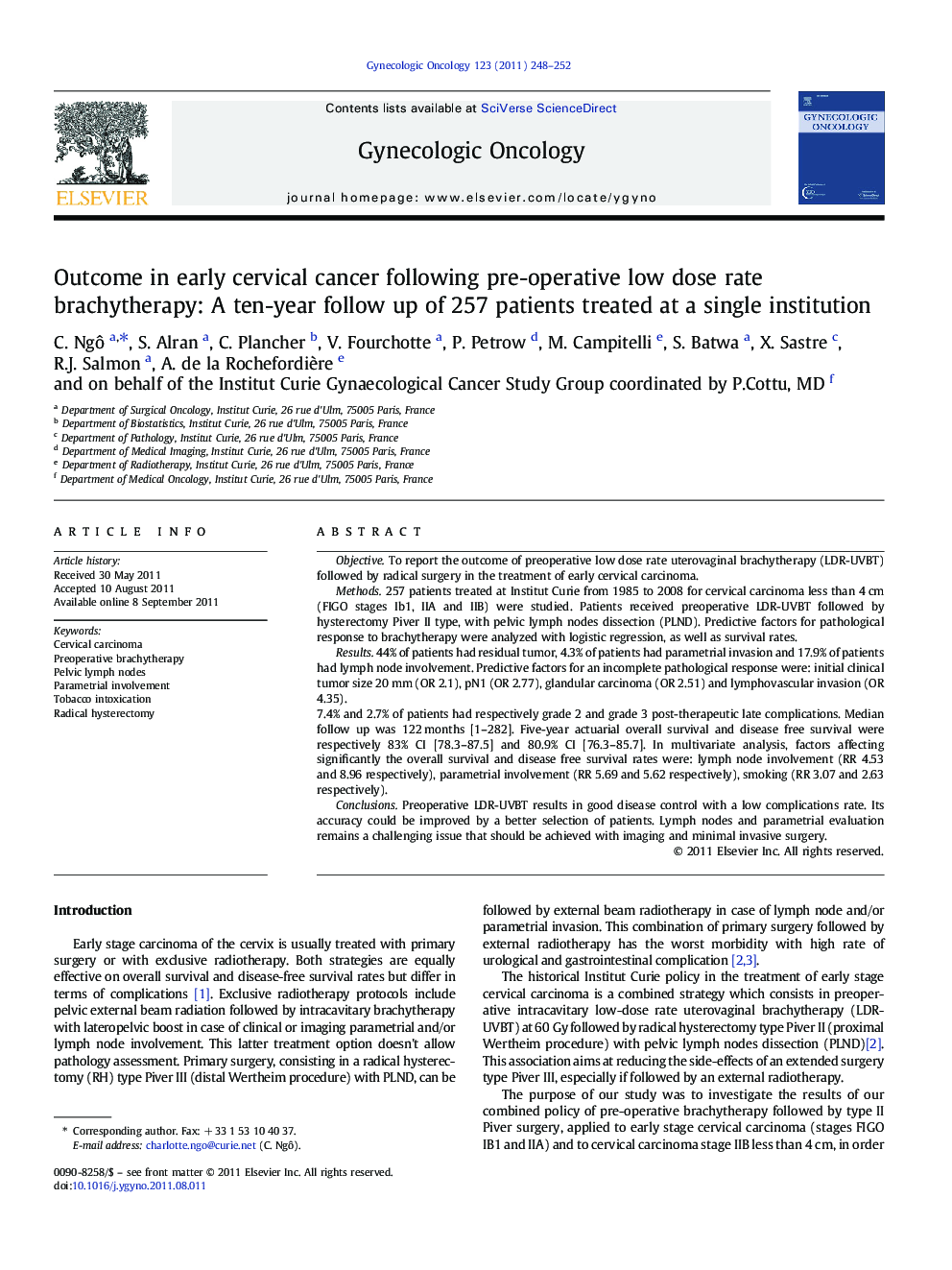| Article ID | Journal | Published Year | Pages | File Type |
|---|---|---|---|---|
| 3945430 | Gynecologic Oncology | 2011 | 5 Pages |
ObjectiveTo report the outcome of preoperative low dose rate uterovaginal brachytherapy (LDR-UVBT) followed by radical surgery in the treatment of early cervical carcinoma.Methods257 patients treated at Institut Curie from 1985 to 2008 for cervical carcinoma less than 4 cm (FIGO stages Ib1, IIA and IIB) were studied. Patients received preoperative LDR-UVBT followed by hysterectomy Piver II type, with pelvic lymph nodes dissection (PLND). Predictive factors for pathological response to brachytherapy were analyzed with logistic regression, as well as survival rates.Results44% of patients had residual tumor, 4.3% of patients had parametrial invasion and 17.9% of patients had lymph node involvement. Predictive factors for an incomplete pathological response were: initial clinical tumor size 20 mm (OR 2.1), pN1 (OR 2.77), glandular carcinoma (OR 2.51) and lymphovascular invasion (OR 4.35).7.4% and 2.7% of patients had respectively grade 2 and grade 3 post-therapeutic late complications. Median follow up was 122 months [1–282]. Five-year actuarial overall survival and disease free survival were respectively 83% CI [78.3–87.5] and 80.9% CI [76.3–85.7]. In multivariate analysis, factors affecting significantly the overall survival and disease free survival rates were: lymph node involvement (RR 4.53 and 8.96 respectively), parametrial involvement (RR 5.69 and 5.62 respectively), smoking (RR 3.07 and 2.63 respectively).ConclusionsPreoperative LDR-UVBT results in good disease control with a low complications rate. Its accuracy could be improved by a better selection of patients. Lymph nodes and parametrial evaluation remains a challenging issue that should be achieved with imaging and minimal invasive surgery.
► Incomplete response to preoperative LDR-UVBT in early cervical cancer affects the survival rates. ► The accuracy of preoperative BT could be improved by a better selection of patients. ► Tumor ≥ 2 cm, lymphovascular invasion and glandular subtype should be selection criteria.
